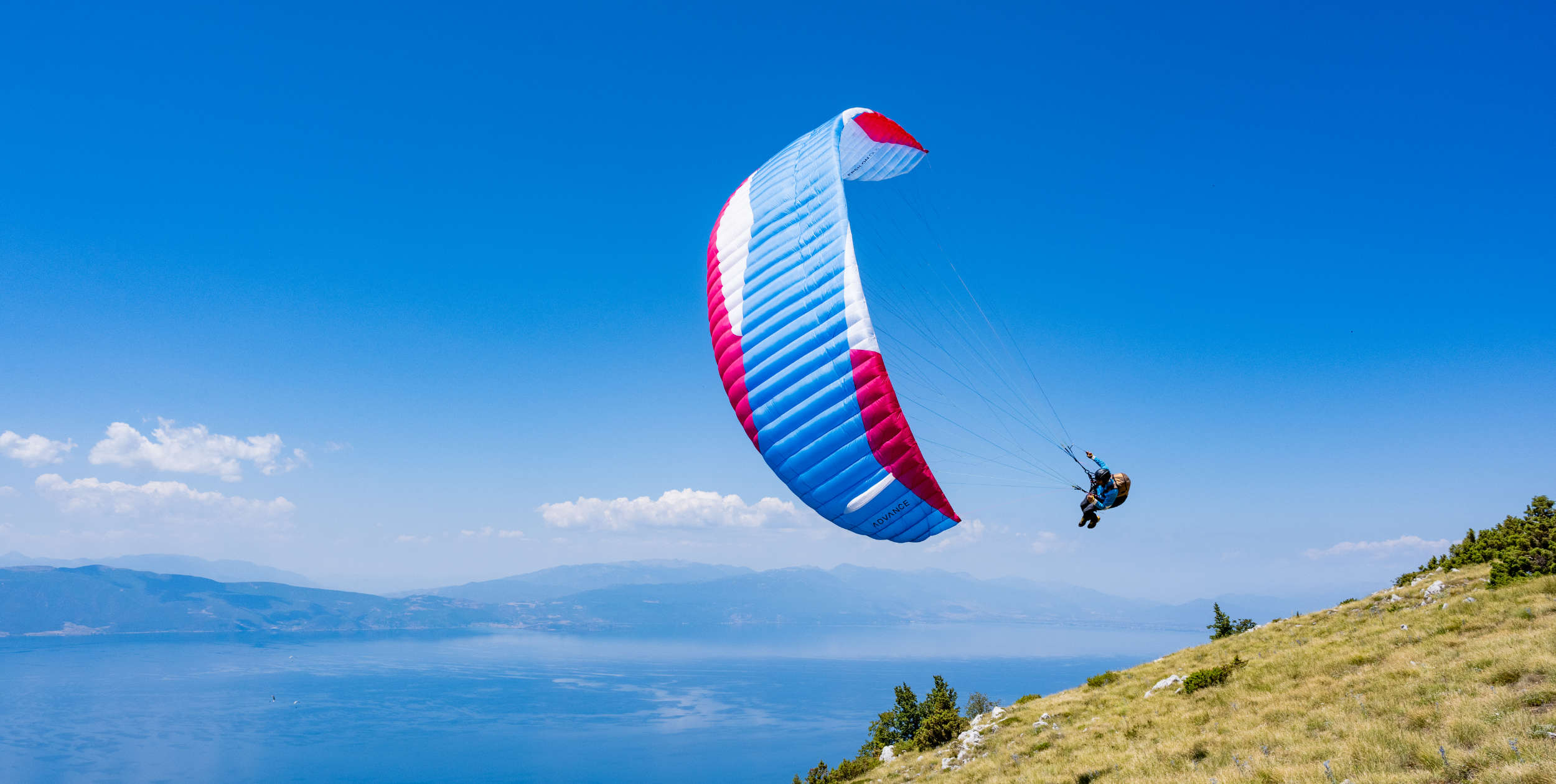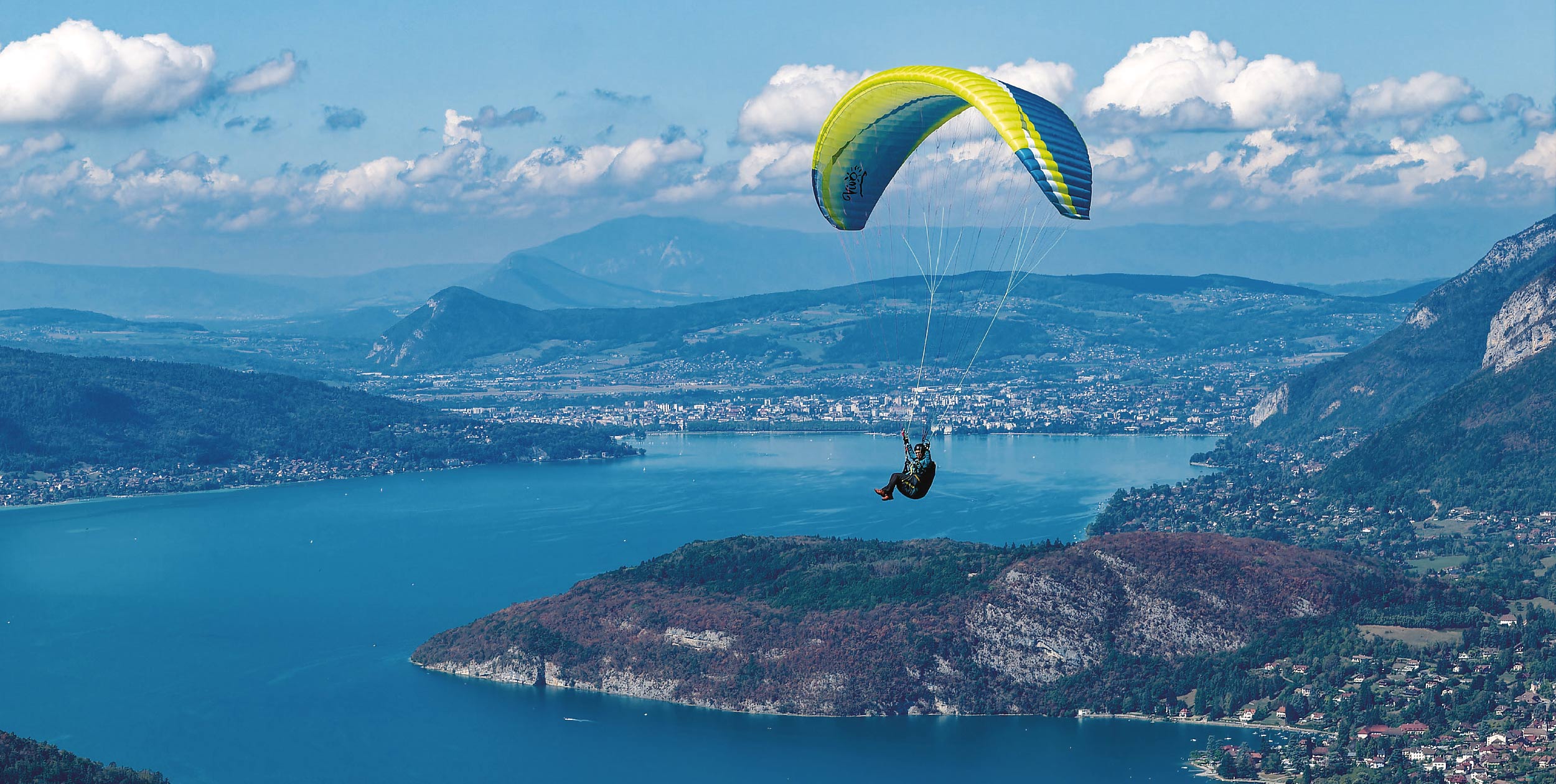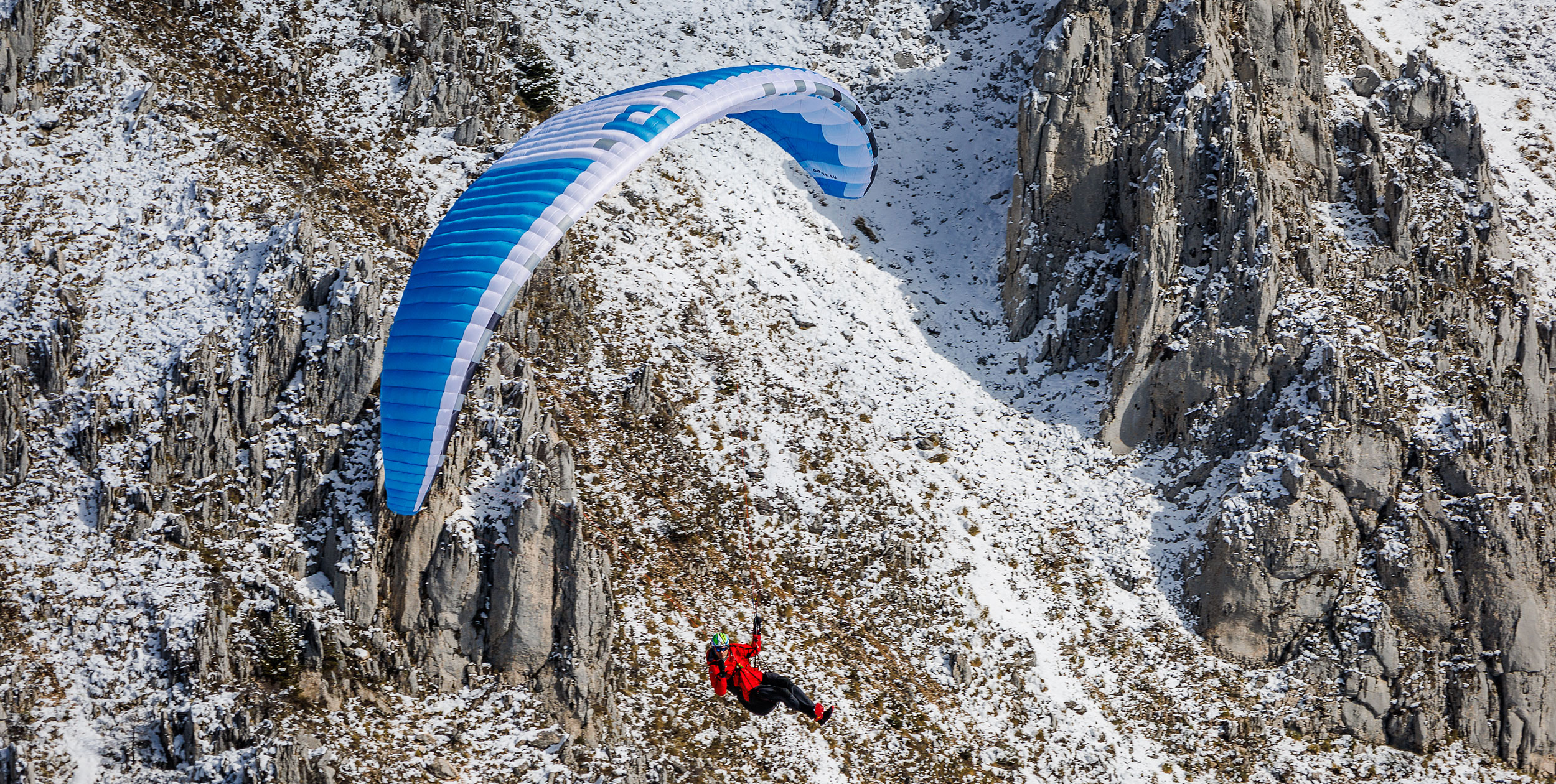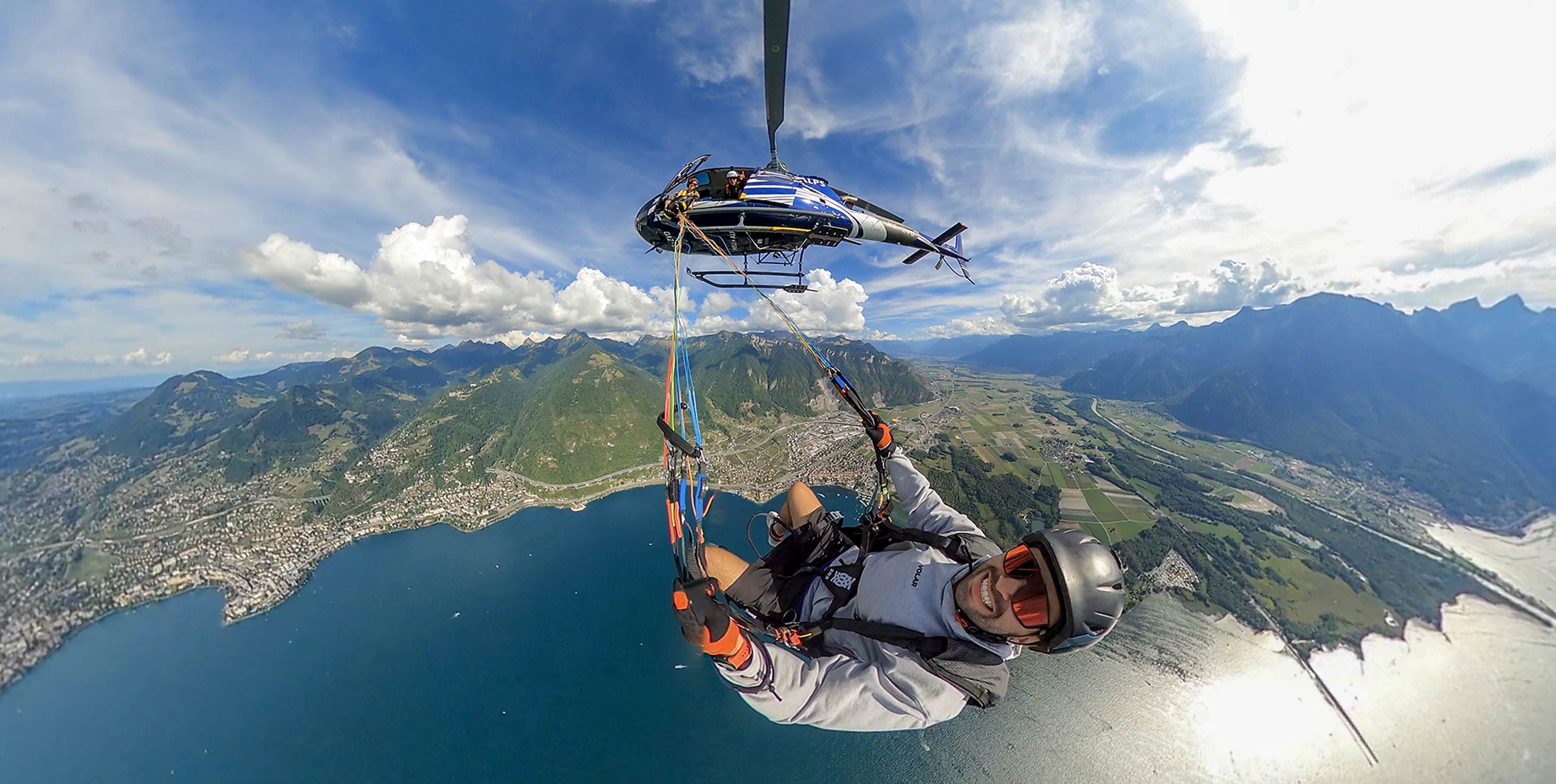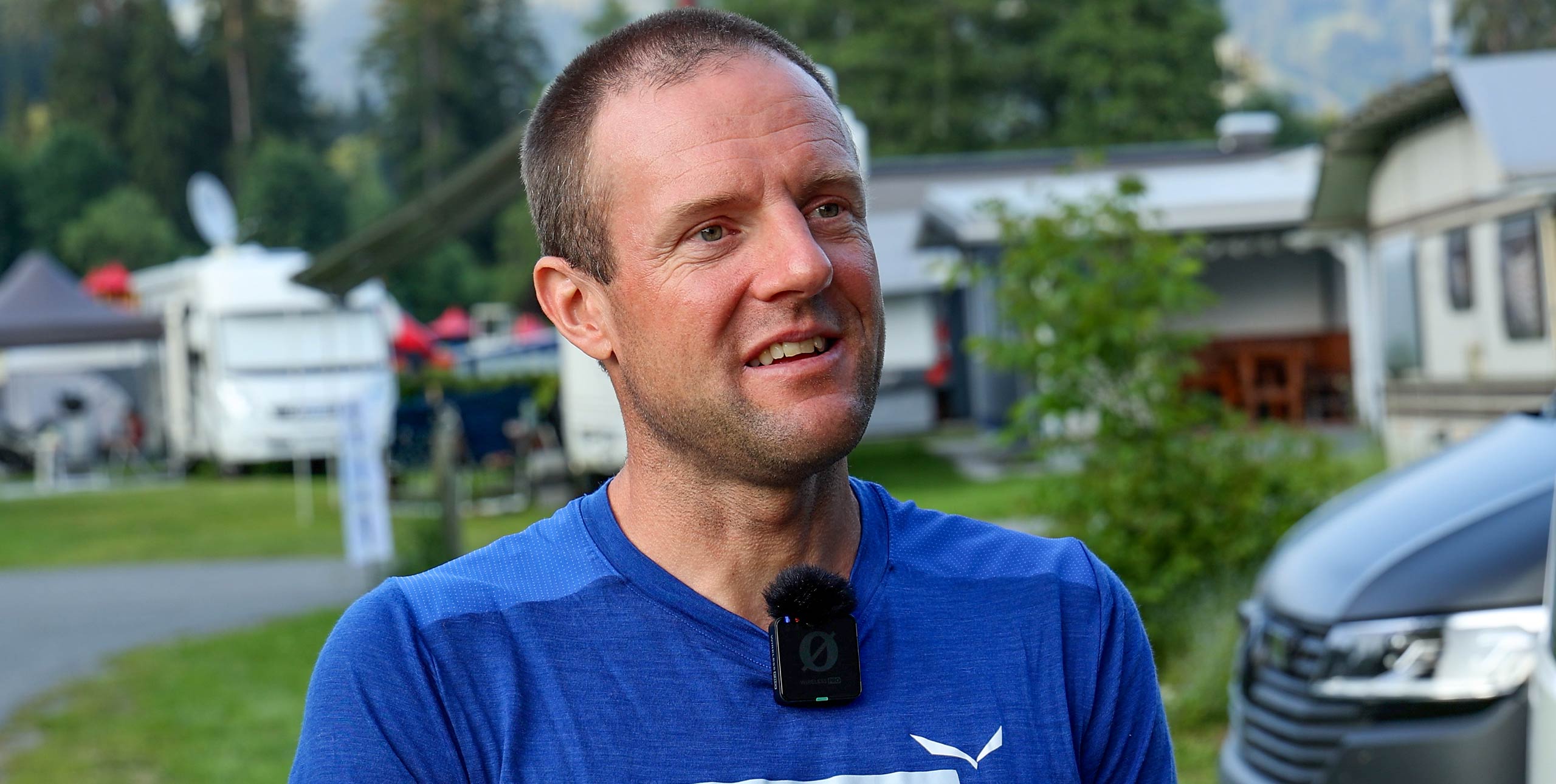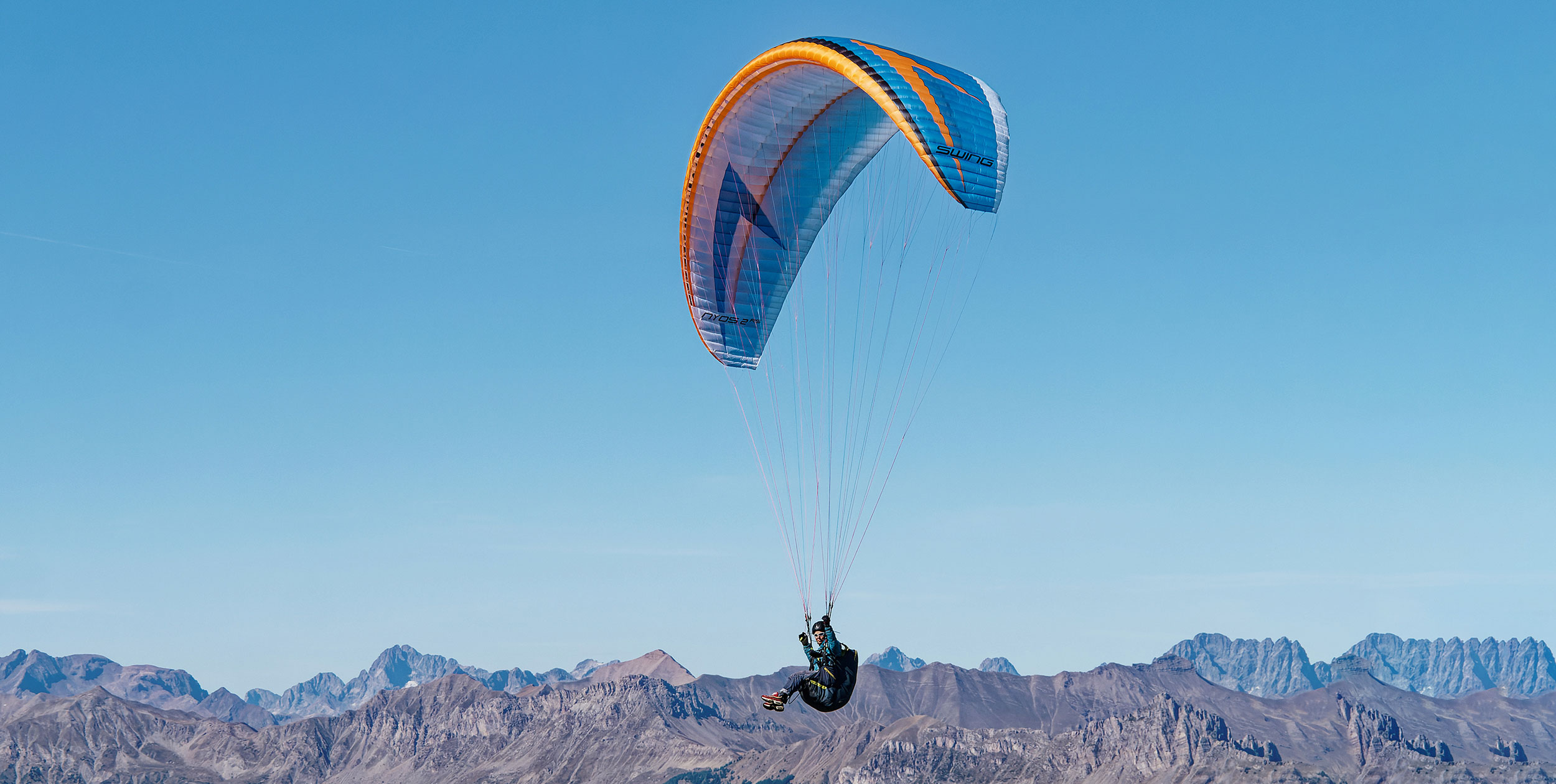
Erwin Voogt investigates how Swing’s updated high-EN B stands out from the crowd.
Buying a paraglider in the EN-B class is not an easy task. Almost all manufacturers have more than one EN-B in their product range, and most have more than two. Swing has four – or six, if you include the Apus RS and Apus Hike RS mini-wings. Before we have a closer look at the new Nyos 2 RS, we asked Lars Pongs, sales manager at Swing, to guide us through their product range.
A wing to suit the pilot
The Miura RS is positioned at the border between the EN-A and EN-B class. It’s designed to be your first wing after getting your licence and it is the obvious choice for many recreational pilots. The Serac RS is a lightweight wing for hike-and-fly. Although it is a mid-level EN-B according to Lars, it has a lower cell count than the Miura RS, with 42 cells versus 48 cells.
The other two Swing EN-Bs are the Arcus 2 RS and the Nyos 2 RS. Lars tells us that both wings are derived from the Nyos RS from 2018. The Arcus 2 RS has a slightly lower cell count and aspect ratio, but according to Lars, the difference in performance and handling is not very big.
The main difference, Lars explains, is the target group. The Arcus 2 RS is designed for ambitious pilots that are still practising a lot such as groundhandling and SIV. It has sheathed lines and a more robust construction. The Nyos 2 RS is optimised for the demands of mature pilots say Swing. We took the wing to southern France for a month to find out what that means.
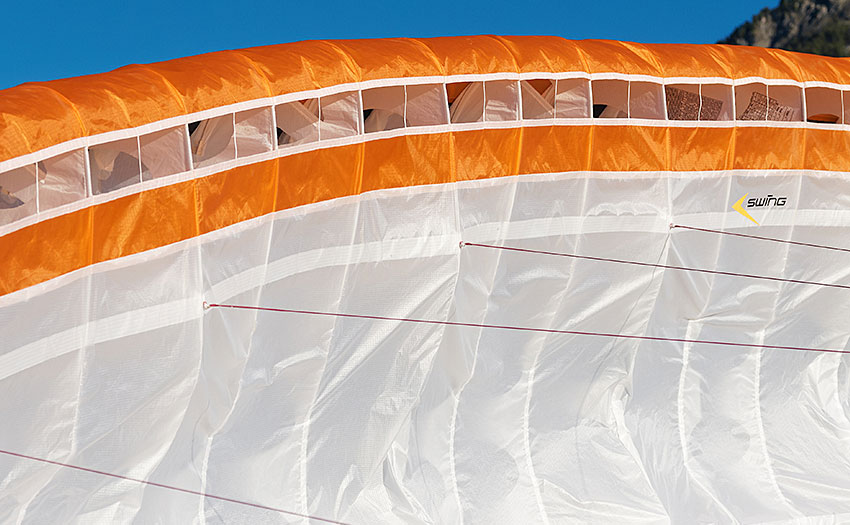
Design and construction
If you spread out the Nyos 2 RS next to its predecessor the Nyos RS, it’s hard to spot the differences. The strings at the cell openings catch the eye. They reduce ballooning of the leading edge, explains Lars. Furthermore, the aspect ratio has been increased from 5.7 to 5.8 and line drag has been reduced, but the number of cells remains at 61.
The glider is available in five sizes, with slightly different weight ranges than its predecessor. The size XS now starts at 55kg, making the Nyos 2 RS accessible for even very small pilots.
The weight ranges have been shifted towards a slightly lower take-off weight with respect to the first Nyos RS. The ‘old’ size S is comparable with the ‘new’ size SM. Both weigh 4.7kg and are similar in wing area.
The top surface consists of a mixture of Porcher Skytex 38 (38g/m2) and Techfiber STA15 (31g/m2). The bottom surface is STA15. Common for Swing, the Nyos 2 RS doesn’t have a sharknose, but it does have RAST – a spanwise barrier that divides the wing into different internal pressurised sections. The leading edge is kept in shape by nitinol rods.
The Edelrid lines, in a 3.5-liner set-up, are made of aramid and Dyneema, mostly unsheathed, but the bottom parts are partly sheathed and coloured. The risers are beautifully made, as we are used to from Swing, and have a simple, straightforward layout, which has become rare these days.
Magnets glue the soft, comfortable and fairly large brake handles to the risers. The brake handles are adjustable by removing or adding plastic rods. For pitch control during accelerated flight, a ‘C-bridge’ is present.
All in all, the Nyos exudes quality and thoughtful simplicity.
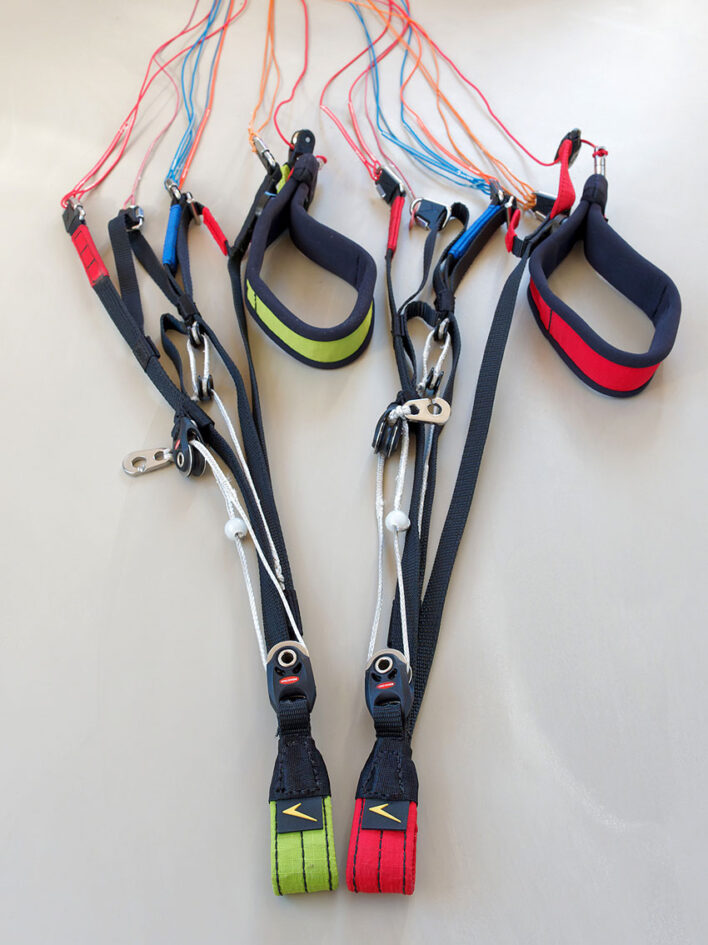
In the air
The glider launches without trouble in any conditions. I launched in a howling 30km/h wind in Saint-André-les-Alpes without much problem. My impression is that it is the RAST that makes strong-wind launches more manageable.
The glider is easy to control during launch with the rear risers, although you have to position your fingers around the C-bridge somehow. In nil wind the Nyos launches fine also, but not as easy as its lightweight EN-C sister Helios, which we reviewed in April 2020 (XC208).
The C-bridge lets you control pitch during accelerated flight. It requires some force, but only little pulls with your fingers are needed for the desired effect.
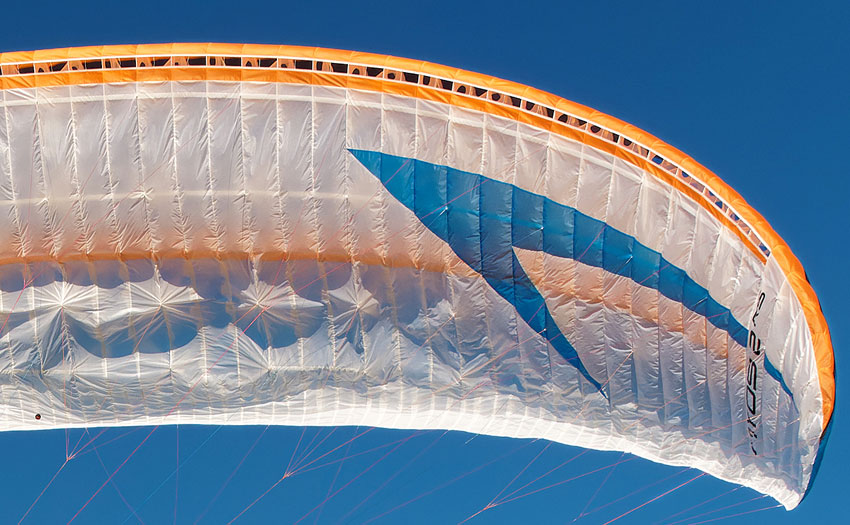
RAST certainly does its job with collapses. I induced collapses by pulling the A’s and by flying big pitch pendulums. I had to, because even the summer thermals of southern France did not manage to collapse the Nyos at all. For a high-EN B, the Nyos 2 RS flies and reacts very solidly in turbulent air.
RAST also makes a wing quite stiff. With the lightweight Helios the drawback of this stiffness was that in rough air the flying could be a little bumpy. With the Nyos 2 RS this is not the case, although the wing sometimes feels a bit too solid while turning and thermalling.
This may just need some getting used to, explains Lars Pongs: “RAST allows a slight shift of the position of the pilot under the canopy towards the back. This gives a smoother behaviour compared with a position further to the front. As a result the Nyos 2 RS penetrates thermals without the need to ‘bite’.”
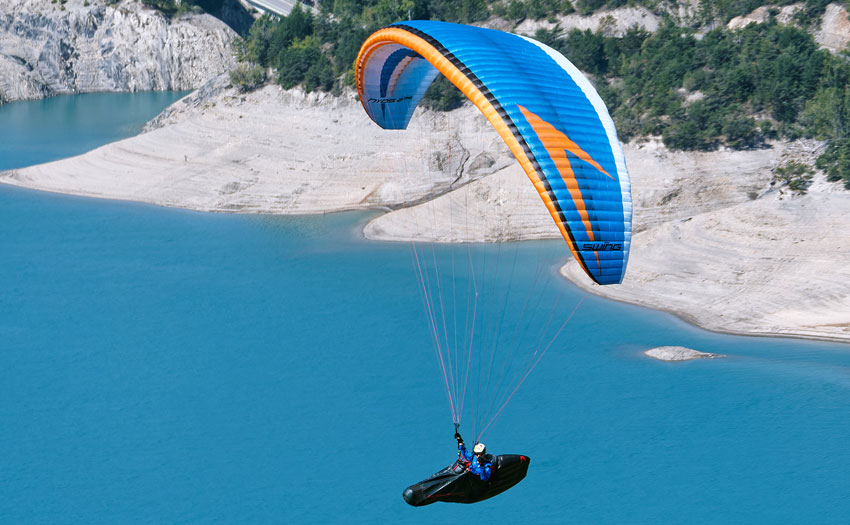
High-B performance
Flying the Nyos 2 RS tip-to-tip with other recent gliders shows that the speed and glide are as expected for its class. A few high-end EN-Bs squeeze out a little bit more performance on full bar than the Nyos, but do that in exchange for some quirks leaving a feeling that these are pushed into the B class on the very edge.
The Nyos is well within the class when it comes to pilot demand. According to Lars Pongs this is exactly as intended. “An EN-B pilot should be able to fly a Swing EN-B without difficulties.”
I can second that. The Nyos 2 RS is sporty and easy to fly without reservations. There are no unexpected surprises. For the EN-B class, however, this is of great value, I think, as many EN-B pilots want an EN-B not only because the glider passes the EN-B certification, but also because it offers a lot of passive safety in real life conditions.
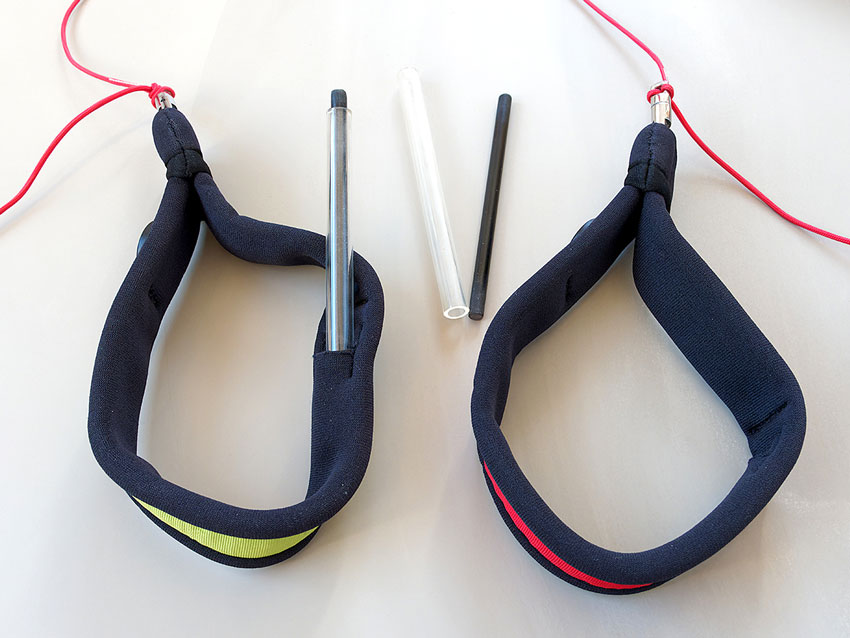
The verdict
Swing are well known for their high quality manufacturing and their focus on safety. The Nyos 2 RS continues in that tradition. It is a handsome, sporty, high-performance wing that flies as you expect a high-end EN-B to fly.
The Nyos 2 RS won’t exhaust you on long XC flights, and, moreover, if conditions at some point suprise you, the wing won’t – it will ressure you instead.
Does it stand out from the EN-B crowd? It can keep up with other recent high-EN B gliders when it comes to performance. But paragliding is more than the best glide in a straight line. It is also about flying and landing safely in demanding conditions. And safety and well-behaved flying characteristics are where the Nyos 2 RS excels.
Manufacturer’s SPECIFICATIONS
Swing say: “The Nyos 2 RS offers performance-hungry cross-country pilots exactly that, plenty of high level performance with maximum flight comfort. A wing that behaves in a predictable manner and is easy to control, even in demanding conditions.”
Pilot level: Intermediate
Sizes: XS, S, SM, ML, L
Certified take-off weight (kg): 55-78, 65-90,75-100, 85-110, 100-125
Flat area (m2): 21, 22.5, 25, 27, 30
Glider weight (kg): 4.1, 4.3, 4.7, 5.0, 5.4
Cells: 61
Flat aspect ratio: 5.8
Certification: EN / LTF B
Erwin Voogt has been flying paragliders since 2008 and is a paragliding instructor from the Netherlands. He flew the Swing Nyos 2 RS (S) this summer for several weeks at the three ‘Saints’ in France: Saint-André, Saint-Vincent and Saint-Hilaire, paired with the Skywalk Range X-Alps2 pod harness at an all-up weight of about 85kg.
Published in issue 236 (December 2022 / January 2023)


